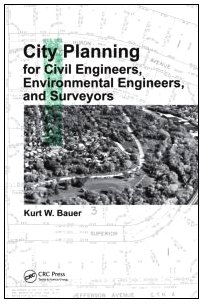

Most ebook files are in PDF format, so you can easily read them using various software such as Foxit Reader or directly on the Google Chrome browser.
Some ebook files are released by publishers in other formats such as .awz, .mobi, .epub, .fb2, etc. You may need to install specific software to read these formats on mobile/PC, such as Calibre.
Please read the tutorial at this link: https://ebookbell.com/faq
We offer FREE conversion to the popular formats you request; however, this may take some time. Therefore, right after payment, please email us, and we will try to provide the service as quickly as possible.
For some exceptional file formats or broken links (if any), please refrain from opening any disputes. Instead, email us first, and we will try to assist within a maximum of 6 hours.
EbookBell Team

5.0
80 reviewsWhile engineers and surveyors are not urban planners, they are often engaged in urban development. Therefore, a high degree of competence in civil engineering specialties such as surveying and mapping, highway and transportation engineering, water resources engineering, environmental engineering, and, particularly, municipal engineering requires an understanding of urban development problems and urban planning objectives, principles, and practices. With this in mind, City Planning for Civil Engineers, Environmental Engineers, and Surveyors focuses on areas of urban planning with which civil and environmental engineers and surveyors are most likely to come into contact or conflict, in which engineers and surveyors may be required to participate, and for which engineers may be required to provide necessary leadership.
The text stresses basic concepts and principles of practice involved in urban planning as most widely practiced, particularly in small and medium-sized communities. It introduces engineering students to land-use planning as a foundation for infrastructure systems planning and development. It also presents plan implementation devices such as zoning, land subdivision control, official mapping, and capital improvement programming. It describes the factors affecting good land subdivision design and improvement. In addition, the text illustrates the importance of good mapping and control surveys for planning purposes. Written from the perspective that cities are social and economic as well as physical entities, the book offers a historical context for urban planning.
There are a large number of texts on the subject of urban planning, but most generally do not address in any comprehensive way the engineering problems encountered in urban planning. This book delineates these problems and stresses the importance of close cooperation between civil engineers and planning professionals to achieving effective urban planning. Armed with this information, students can become more knowledgeable participants in the urban planning process and more effective members of urban planning teams and governmental and consulting agency staff.